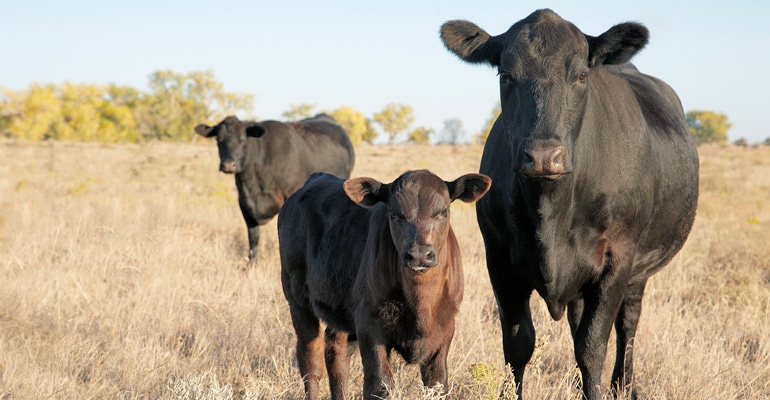Flexible, effective reproductive vaccination protocols help beef producers protect the cow herd from disease challenges.
April 25, 2018

Sponsored Content
While research has shown that a modified-live vaccination program can be highly effective in helping prevent abortions caused by infectious bovine rhinotracheitis (IBR) and persistent infection caused by bovine viral diarrhea viruses (BVDV) Types 1 and 2, maintaining a strictly modified-live vaccination program that fits the cattle working schedule can be challenging for veterinarians and producers alike.
“Vaccination is like an insurance policy,” said Daniel Scruggs, DVM, managing veterinarian with Zoetis. “It costs the producer from $450 to perhaps over $600 a year, depending on who you talk to and what numbers they use, to keep a cow and to keep her in condition to breed. Vaccines are an insurance policy against losing that pregnancy and giving that cow the best chance of carrying the pregnancy to term so that you can realize the benefit of your investment.”
A nearly three-year study at Auburn University evaluated the efficacy of a vaccination program where heifers were all vaccinated with two doses of a modified-live reproductive vaccine (Bovi-Shield Gold FP® 5) prior to breeding. At pregnancy check, the vaccinated heifers were split into two groups — one continued to get Bovi-Shield Gold FP 5 and a second group was given a killed BVD vaccine (CattleMaster Gold FP® 5). The study also maintained a control group, which received no vaccinations throughout nearly three years.
All the heifers were calved out and rebred for their second pregnancy. The animals confirmed pregnant with a second calf were challenged with BVD through exposure to persistently infected animals 11 months after their last vaccination. At the end of the BVD exposure, each group received their respective annual booster dose of reproductive vaccine. Ninety-two days after vaccination, the groups received an exposure to IBR intravenously when the cows were approximately four months pregnant.
Study results in the control group revealed the severity of the challenge model with 14 of 15 cows either aborting BVD-positive calves or delivering a BVD persistently infected (PI) calf. Researchers observed significant (p < 0.0001) protection against both virulent BVD and IBR exposure in the vaccinated groups with both vaccine groups providing similarly high levels of protection.1
Cattlemen want the best for their cow herd. Protection begins before the calves are born, with an effective fetal protection program. A visit with their veterinarian or local Zoetis representative can help answer questions as producers develop a fetal protection program to fit their operation or visit FetalCalfProtection.com for more information.
BOVI-SHIELD GOLD FP: Do not use in pregnant cows (abortions can result) unless they were vaccinated, according to label directions, with any BOVI-SHIELD GOLD FP or PREGGUARD GOLD FP® vaccine prebreeding initially and within 12 months thereafter. Do not use in calves nursing pregnant cows unless their dams were vaccinated within the past 12 months as described above. To help ensure safety in pregnant cattle, heifers must receive at least 2 doses of any BOVI-SHIELD GOLD FP or PREGGUARD GOLD FP vaccine with the second dose administered approximately 30 days prebreeding.
References:
1 Walz PH, Givens MD, Rodning SP, et al. Evaluation of reproductive protection against bovine viral diarrhea virus and bovine herpesvirus-1 afforded by annual revaccination with modified-live viral or combination modified-live/killed viral vaccines after primary vaccination with modified-live viral vaccine. Vaccine. 2017;35(7):1046-1054.
About the Author(s)
You May Also Like



